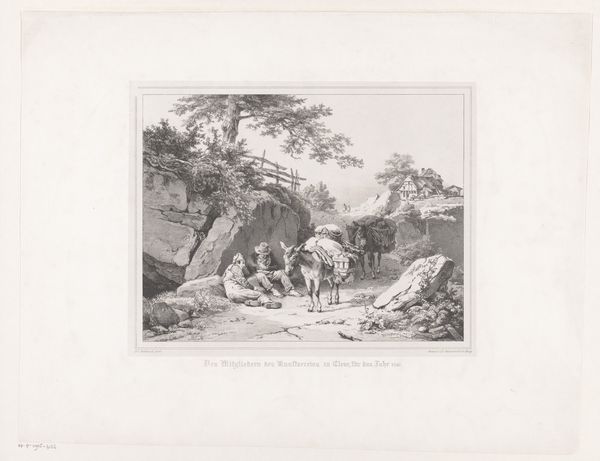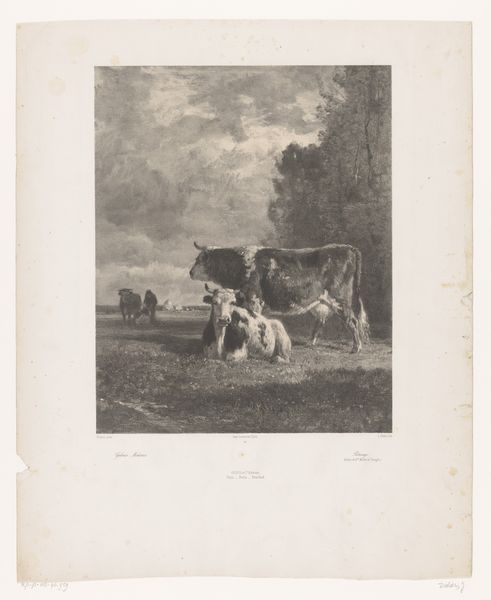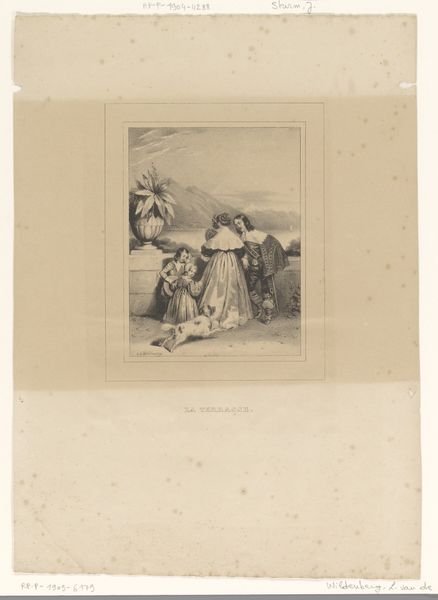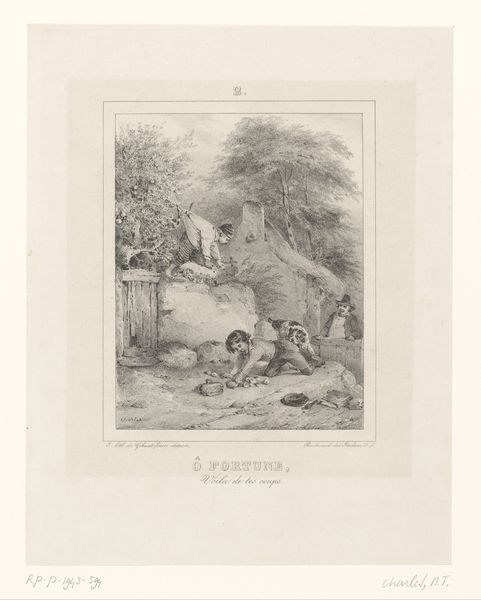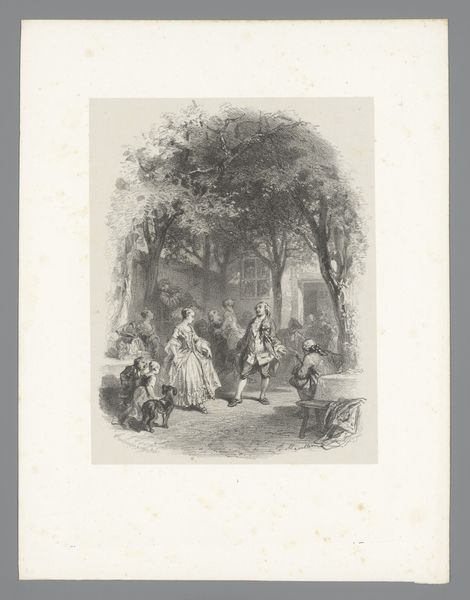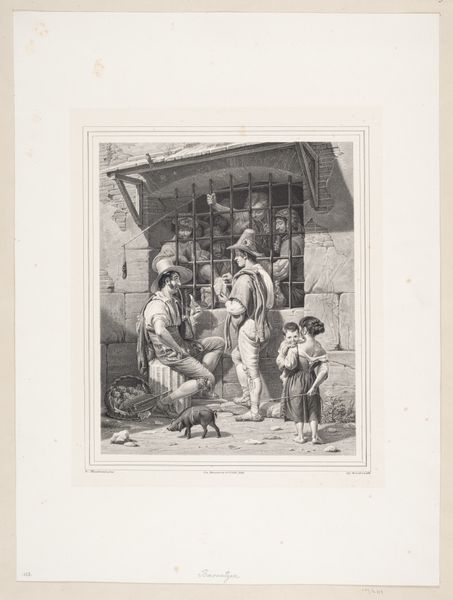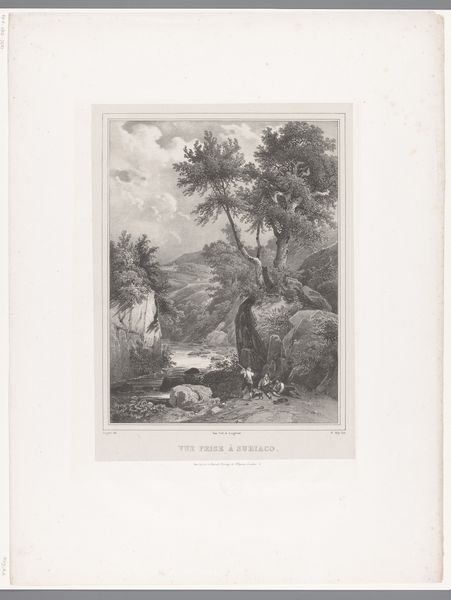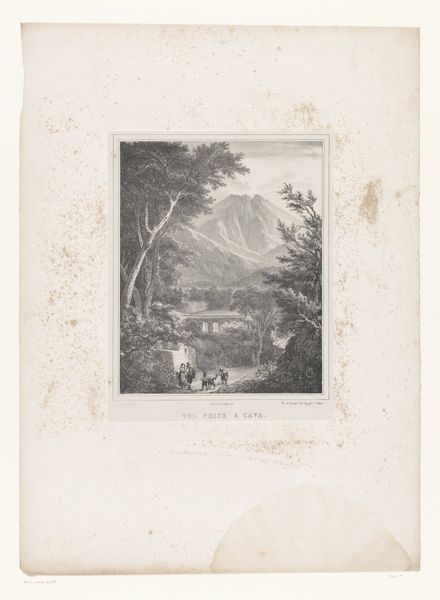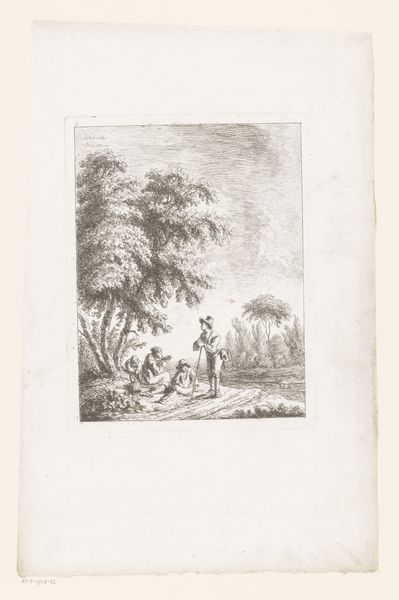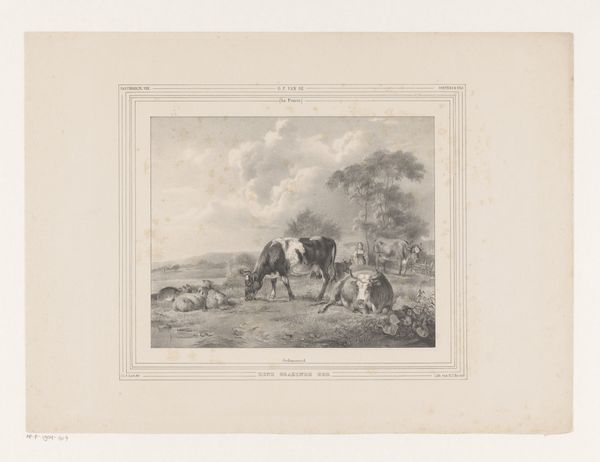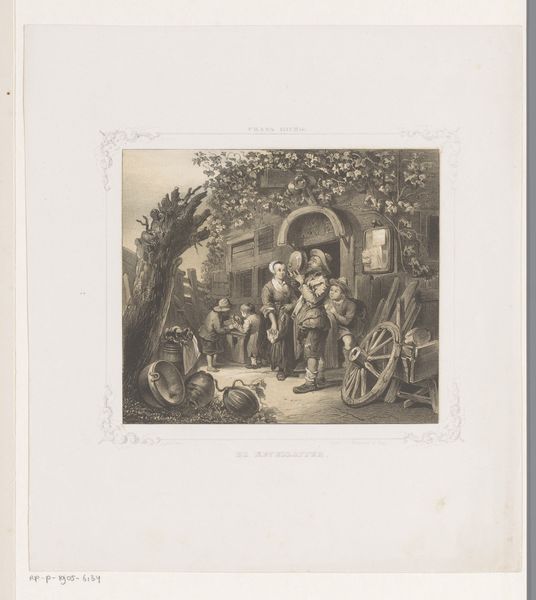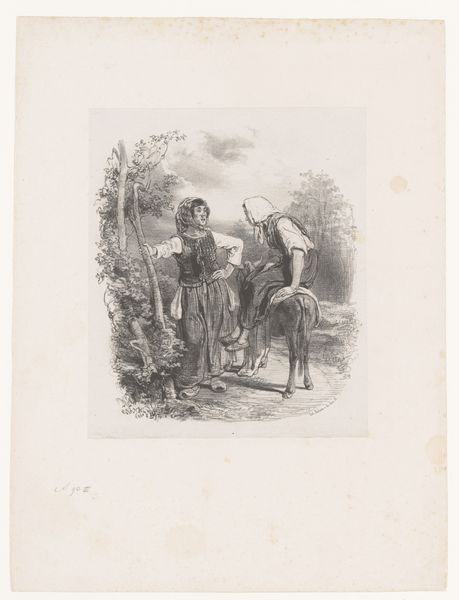
drawing, print, paper, pencil, engraving
#
drawing
# print
#
paper
#
pencil
#
genre-painting
#
street
#
engraving
Dimensions: height 358 mm, width 270 mm
Copyright: Rijks Museum: Open Domain
Curator: This drawing, titled "Ontmoeting op straat" or "Meeting on the Street," dates from 1823 to 1869 and is attributed to Hermanus Johannes van den Hout. It's currently held in the Rijksmuseum. My immediate reaction is that it evokes a certain social tension. Editor: Absolutely, it's the stark contrast of figures emerging into what feels like a stage set in nature. I’m intrigued by its materiality – the sharp lines and meticulous detail of the engraving create such depth on paper. How does Van den Hout’s process speak to the social conventions of representing class encounters during that era? Curator: Precisely. The use of printmaking—an accessible medium for dissemination—suggests the intent was for broad viewership and potentially social commentary on this chance encounter, this "Meeting on the Street". Look closely: The central figure, possibly a landowner or gentleman, his back straight, impedes a poor country woman from carrying water with his rifle! What is so striking to me is not the man himself, but rather how the materials give insight to such inequity that goes widely unquestioned, or even worse accepted! Editor: Indeed. There's an undeniable imbalance of power being displayed here. A commentary, perhaps, on the subtle violences perpetuated within social hierarchies. And this seemingly natural backdrop serves only to highlight and heighten those social imbalances—land itself becomes part of that power structure! It seems every aspect has a designed placement from socio-economic injustice and privilege in 19th century Netherlands—an intricate performance indeed—and on the back of what labor practices I would guess! Curator: It's fascinating how the constraints and affordances of pencil, paper and the printing press intersect here, challenging, perhaps, notions of fine art versus applied craft. Editor: And while the scene is specific to a time and place, the themes of power, access, and the impact of social encounters continue to resonate powerfully today. Looking closer reminds us of the continuing significance of the dialogue between historical context and our present moment. I'm glad we got to experience and delve into that together. Curator: As am I. There's something quite sobering about that—I won't be thinking about encounters, and their stage or props the same.
Comments
No comments
Be the first to comment and join the conversation on the ultimate creative platform.
